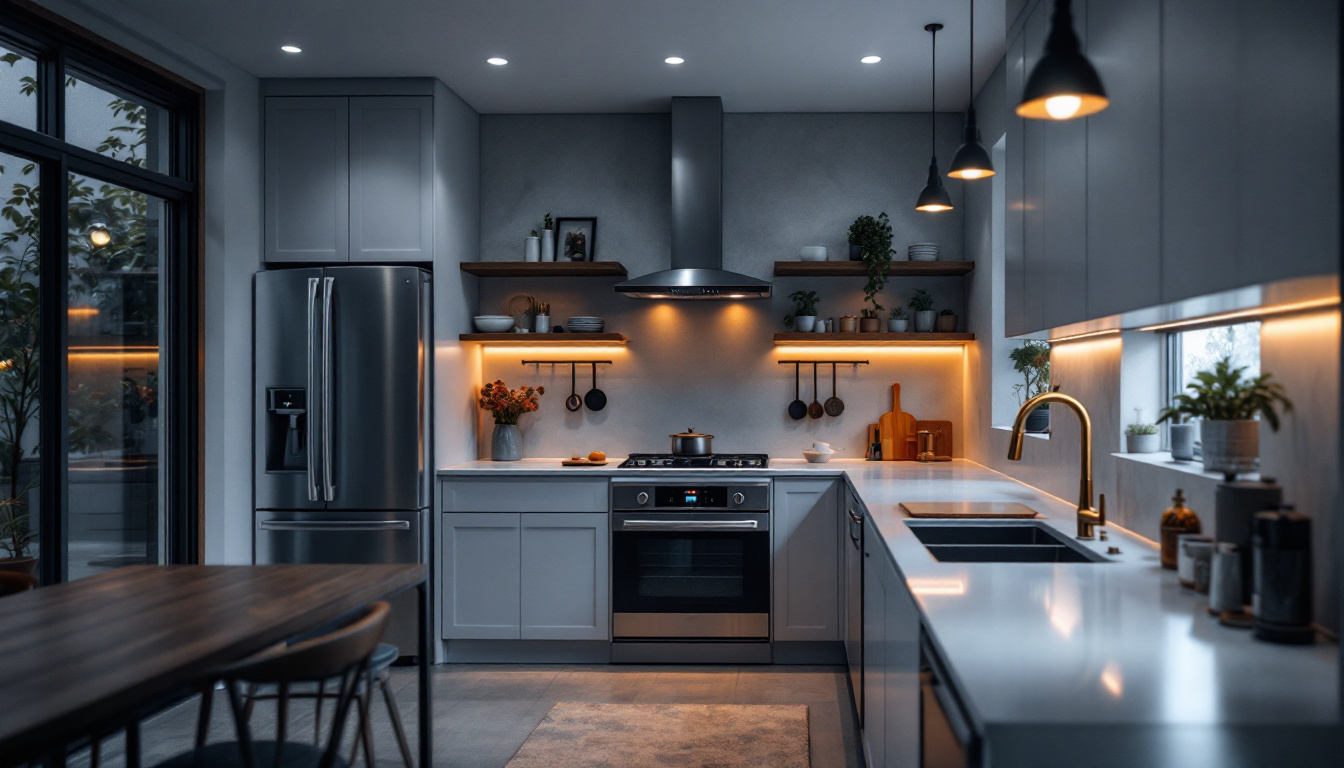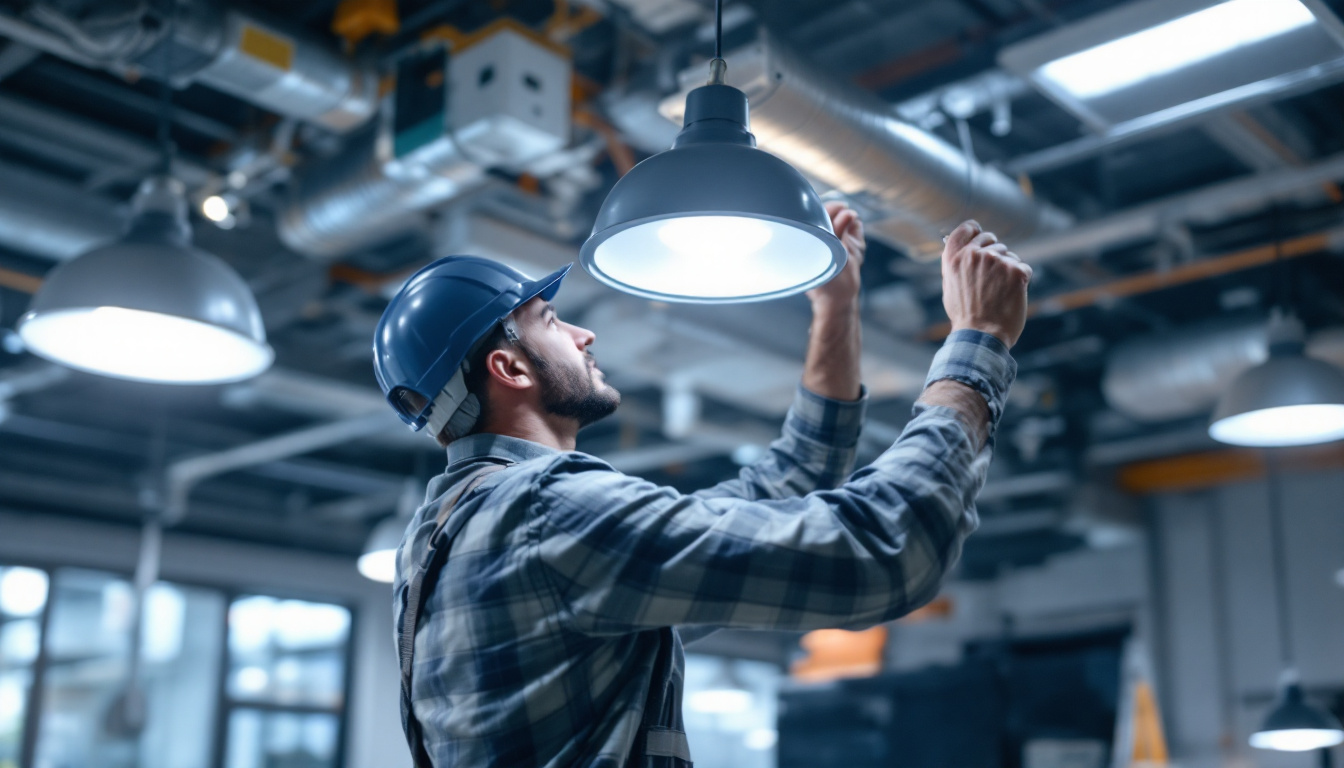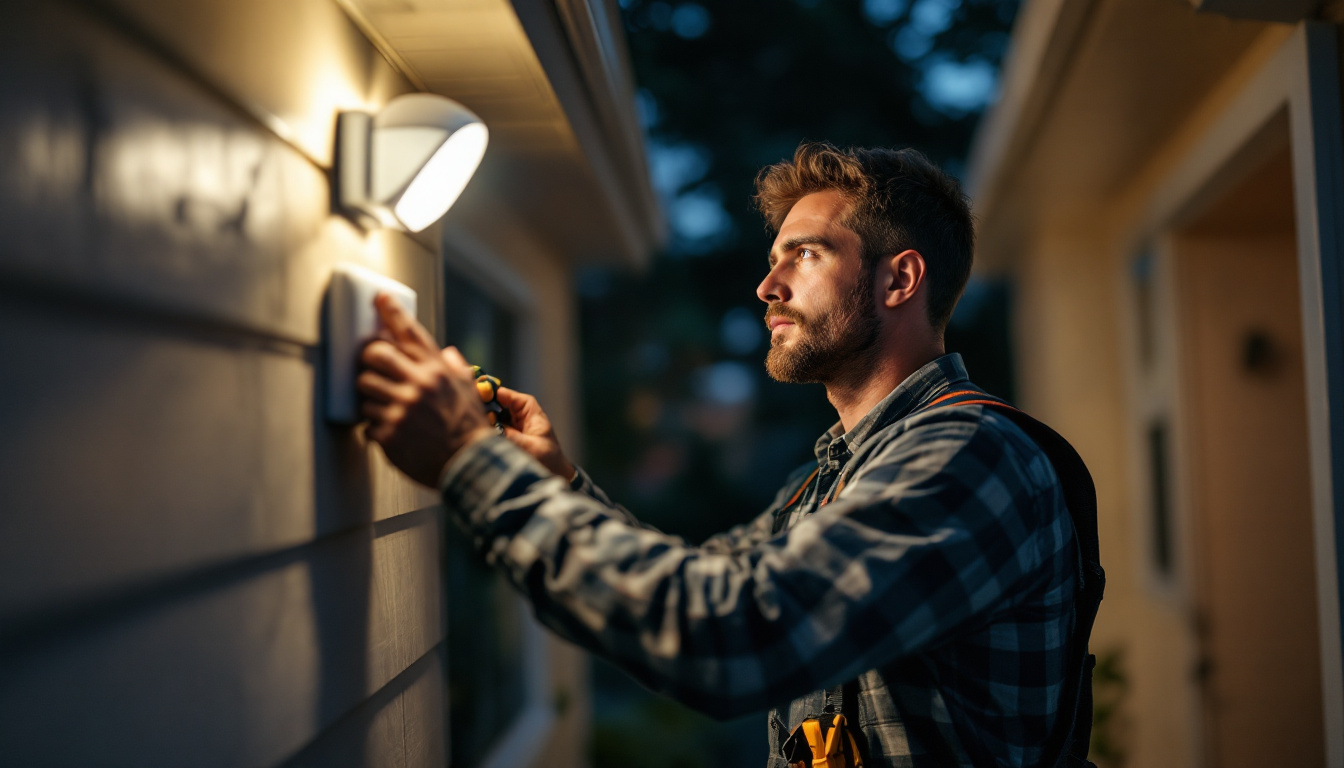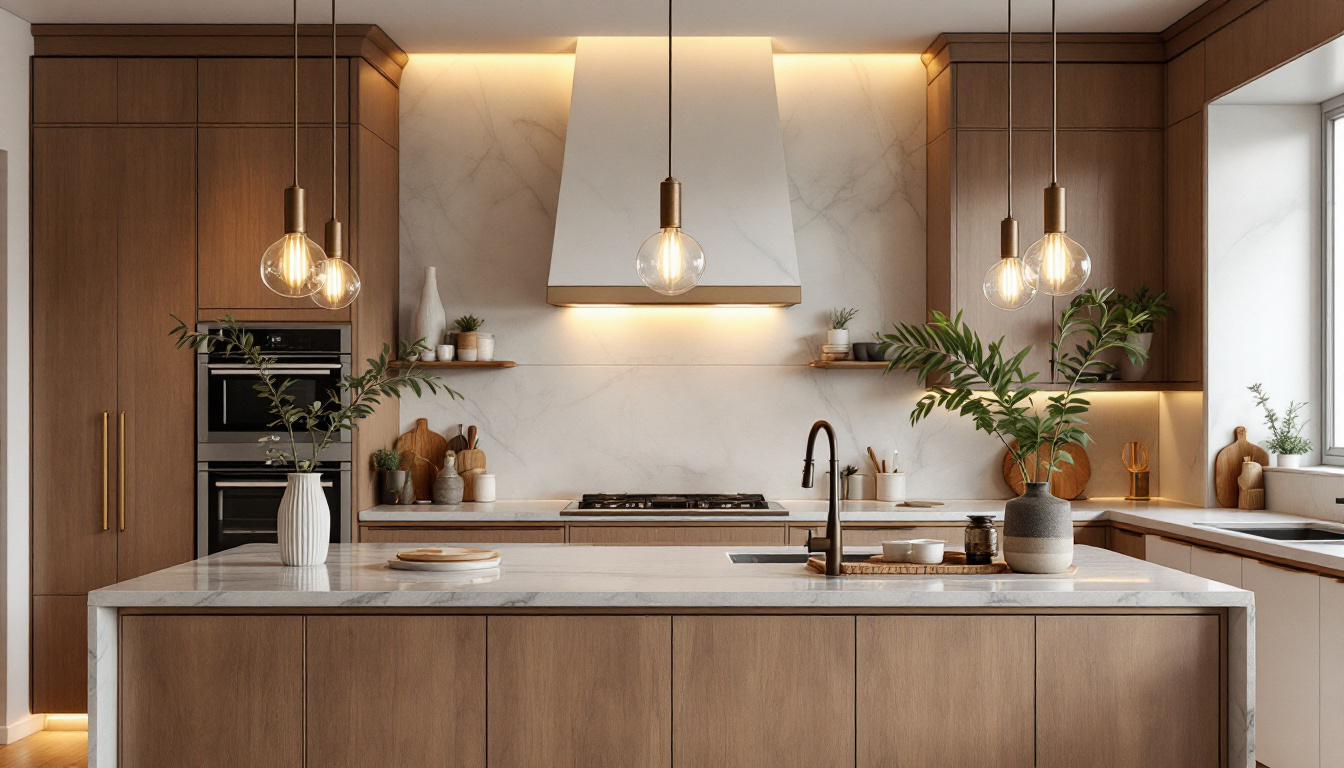
Recessed lighting has become a popular choice in modern kitchen design, not only for its aesthetic appeal but also for its functional benefits. This article delves into how recessed lighting enhances safety in lighting installations, particularly in kitchen environments where proper illumination is crucial.
Recessed lighting, often referred to as can lighting or downlighting, involves installing light fixtures into the ceiling, creating a clean and streamlined look. This type of lighting is particularly effective in kitchens, where the need for bright, focused illumination is paramount. By being flush with the ceiling, recessed lights minimize the risk of accidental bumps and falls, making them a safer option in busy kitchen spaces. Additionally, the unobtrusive nature of recessed lighting allows for a more open feel in the kitchen, as it doesn’t clutter the visual space with hanging fixtures or bulky lamps.
The versatility of recessed lighting allows for various design options, making it suitable for different kitchen layouts. Whether the kitchen is large or compact, recessed lights can be strategically placed to provide optimal illumination without overwhelming the space. This adaptability not only enhances safety by reducing shadows but also contributes to the overall aesthetic of the kitchen. For example, in an open-concept design, recessed lighting can seamlessly blend with other lighting sources, such as pendant lights over an island, creating a cohesive look that enhances the room’s ambiance. Furthermore, the ability to adjust the brightness and color temperature of recessed lights can transform the kitchen’s atmosphere, making it inviting for both cooking and entertaining.
There are several types of recessed lighting fixtures available, each designed for specific applications. For instance, adjustable or gimbal recessed lights can be directed to highlight certain areas, such as countertops or cooking surfaces. This targeted lighting helps eliminate dark spots that can lead to accidents, particularly when handling sharp knives or hot cookware. In addition to adjustable fixtures, there are also LED recessed lights that offer energy efficiency and longevity, making them a sustainable choice for the environmentally conscious homeowner. These LED options come in various color temperatures, allowing homeowners to choose warmer tones for a cozy feel or cooler tones for a more modern, crisp look. Moreover, smart recessed lighting systems can be integrated into home automation setups, enabling users to control brightness and color with their smartphones or voice commands, adding convenience and modernity to the kitchen experience.
In a kitchen, safety is paramount. Proper lighting can significantly reduce the risk of accidents, and recessed lighting plays a crucial role in achieving this. By providing even illumination throughout the space, recessed lights enhance visibility and create a safer cooking environment.
One of the primary safety concerns in any kitchen is the presence of shadows, which can obscure hazards and make it difficult to see what one is doing. Recessed lighting, when installed correctly, can minimize shadows by distributing light evenly across work surfaces. This is particularly important in areas where precision is required, such as chopping vegetables or measuring ingredients. Additionally, the sleek design of recessed lights means they are less likely to be bumped or knocked over, further reducing the risk of accidents that can occur with hanging fixtures.
High-activity areas in the kitchen, such as the stove, sink, and countertops, require adequate lighting to ensure safety. Recessed lighting can be installed directly above these critical zones, providing bright, focused illumination that enhances visibility. This setup allows cooks to monitor their tasks effectively, reducing the likelihood of accidents caused by poor lighting. Furthermore, the use of dimmable recessed lights can offer flexibility; during meal prep, bright lighting can help with detailed tasks, while a softer glow can create a more relaxed atmosphere during family gatherings or late-night snacks, all while maintaining safety.
Beyond safety, recessed lighting contributes to the overall aesthetic of a kitchen. The unobtrusive nature of recessed fixtures allows for a clean and modern look, which can make the space feel larger and more open. This design choice not only serves a functional purpose but also elevates the kitchen’s visual appeal. Moreover, when combined with other lighting sources, such as under-cabinet lights or pendant fixtures, recessed lighting can create a layered lighting effect that enhances both safety and style. This thoughtful approach to lighting design ensures that the kitchen remains both a safe and inviting space for cooking and entertaining.
Another significant advantage of recessed lighting is its energy efficiency. Many recessed fixtures are compatible with LED bulbs, which consume less energy and have a longer lifespan than traditional incandescent bulbs. This not only helps reduce electricity bills but also minimizes the frequency of bulb replacements, making it a practical choice for busy kitchens. Additionally, the lower heat output of LED lights contributes to a cooler kitchen environment, which is especially beneficial during the summer months when cooking can already increase the temperature in the space. By choosing energy-efficient recessed lighting, homeowners can enjoy a safer kitchen while also being mindful of their environmental impact.
While the benefits of recessed lighting are clear, proper installation is essential to maximize safety. Lighting contractors must consider several factors to ensure that recessed lighting is both effective and safe.
The choice of fixtures is crucial in ensuring safety in recessed lighting installations. It is essential to select fixtures that are rated for the specific environment of the kitchen. For instance, fixtures should be moisture-resistant if they are installed near sinks or dishwashers. Additionally, selecting the right wattage and bulb type can help prevent overheating and reduce fire hazards. It’s also worth noting that LED fixtures are often recommended due to their lower heat output and energy efficiency, making them a safer choice for long-term use. Furthermore, ensuring that the fixtures have adequate insulation contact ratings can prevent potential fire risks associated with insulation materials.
Placement and spacing of recessed lights are critical for achieving optimal illumination and safety. A common guideline is to space the fixtures approximately 4 to 6 feet apart, depending on the height of the ceiling and the desired brightness. Proper spacing helps to avoid dark areas and ensures that the entire kitchen is well-lit, minimizing the risk of accidents. Additionally, considering the layout of the kitchen is vital; placing lights over work areas such as countertops and islands can enhance visibility where it is most needed. It is also advisable to avoid placing recessed lights directly above areas where people frequently stand, as this can create uncomfortable glare. Instead, angling the fixtures slightly can help direct light where it is most beneficial while reducing harsh shadows.
In addition to enhancing safety, recessed lighting can also contribute to energy efficiency. By utilizing LED bulbs in recessed fixtures, kitchens can benefit from lower energy consumption while still achieving bright illumination. This not only reduces electricity costs but also lowers the risk of overheating, further enhancing safety.
LED bulbs have a significantly longer lifespan compared to traditional incandescent bulbs. This longevity means that replacements are less frequent, reducing the chances of accidents during bulb changes. Furthermore, LEDs emit less heat, which minimizes the risk of burns or fire hazards associated with traditional lighting options.
Incorporating smart lighting solutions into recessed lighting installations can further enhance safety. Smart bulbs can be programmed to adjust brightness levels based on the time of day or occupancy, ensuring that the kitchen is always adequately lit when needed. Additionally, features such as motion sensors can automatically turn lights on when someone enters the kitchen, providing immediate illumination and reducing the risk of accidents.
Lighting contractors must also be aware of regulatory compliance and safety standards when installing recessed lighting in kitchens. Adhering to local building codes and safety regulations is essential to ensure that installations are safe and reliable.
Local building codes often dictate specific requirements for electrical installations, including recessed lighting. These codes may cover aspects such as fixture ratings, wiring methods, and placement guidelines. Familiarity with these regulations is vital for lighting contractors to ensure that their installations meet safety standards and avoid potential liabilities.
Regular maintenance and inspections of recessed lighting fixtures are essential for ensuring continued safety. Over time, dust and debris can accumulate in fixtures, reducing their effectiveness and potentially causing overheating. Lighting contractors should recommend periodic checks to ensure that fixtures are clean and functioning properly, contributing to a safe kitchen environment.
Recessed lighting is an excellent choice for enhancing safety in kitchen lighting installations. By providing even illumination, reducing shadows, and improving visibility in high-activity areas, recessed lights create a safer cooking environment. Proper installation, fixture selection, and adherence to safety standards are crucial for maximizing the benefits of recessed lighting.
As kitchens continue to evolve into multifunctional spaces, the importance of safety in lighting installations cannot be overstated. Lighting contractors play a vital role in ensuring that recessed lighting is installed correctly and effectively, contributing to both the safety and aesthetics of modern kitchens. By embracing the advantages of recessed lighting, contractors can provide their clients with not only beautiful but also safer kitchen environments.
Ready to elevate the safety and style of your kitchen lighting installations? Look no further than LumenWholesale for the highest quality recessed lighting solutions. Our spec-grade products are designed to meet the rigorous demands of modern kitchens, ensuring you deliver both beauty and safety to your clients. With unbeatable wholesale prices and the convenience of free shipping on bulk orders, LumenWholesale is your go-to source for superior lighting without the inflated markups. Discover our selection and secure the best value in wholesale lighting today.

Discover the insider secrets lighting contractors use to master lamp dimming switches.

Discover how vapor tight fixture lights are revolutionizing the lighting industry, offering unparalleled durability and efficiency.

Discover the frequent pitfalls lighting contractors encounter with motion detector installations.

Discover expert insights on selecting and installing kitchen island light fixtures tailored for lighting contractors.